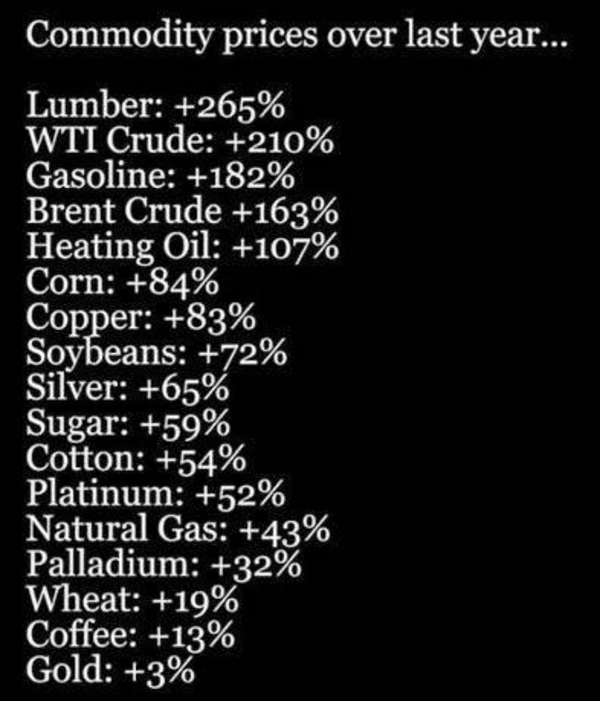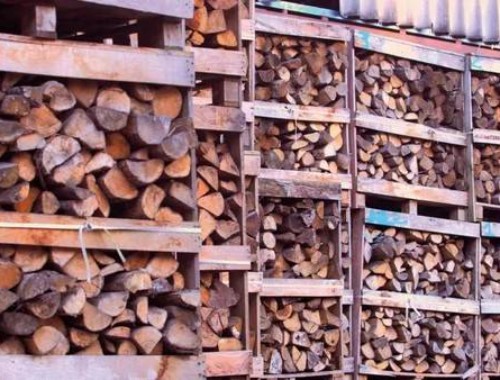International shipping continues to be blocked, and the European timber industry is facing adjustments
Source:77° Global Furniture Media
The problem of "hard to find a box" facing Europe may once again affect the supply of the timber industry chain, thereby promoting prices to rise again.
Insiders listed a list of major international commodities' gains in the past year. From this, we can see that the bottom of the increase is gold, and the top of the list is timber futures. In fact, if the final unit is not divided into ounces or thousand board feet, the price of timber futures has gradually approached the price of gold.

The reason for the last round of soaring timber prices is undoubtedly the United States. The strong domestic housing market and policy support in the United States have made domestic demand for timber soar. With the shortage of domestic timber in the United States, there are even timber merchants travelling across oceans to Europe to snap up timber.
The current log supply situation in the world is not optimistic. Many countries have begun to change their policies to give priority to the supply of limited timber resources to the country, and they have very strict control over the amount of timber exports. U.S. timber production capacity is even more due to this year’ s forest fires that have led to continuous reductions in production in major timber-producing areas in North America. Considering that the United States is about to usher in the hurricane season, the logging, transportation and other necessary links will cause a certain degree of delay and impact.
Europe has become the only region in the world where there is a surplus of wood that can be exported. It has always been affected by European pests, leading to a large area of European forests that must be cut down to curb the continued spread of tree beetles. The felled wood just met the needs of American timber importers, and the two sides hit it off.
According to data from the U.S. Department of Agriculture' s Overseas Bureau, the amount of wood imported by the United States from Europe hit a record high last year, almost three times the amount in 2019. In the first three months of 2021, strong growth was maintained, an increase of 37% over the same period last year.
International shipping continues to be blocked, and prices continue to skyrocket. The price of 40-inch containers originally shipped to Chicago was between 2,000-3,000 U.S. dollars, but now this price has increased nearly 10 times. Starting from the second half of last year, the freight rate of the entire market went crazy.
In the North American market, the inventory of empty containers continues to build up. With the sharp increase in domestic demand for imports in the United States, North American ports continue to be congested, which affects the utilization rate of trailers, is not conducive to the business of US exporters, and once again causes ships to press the port. Beginning in the middle of last year, U.S. ports continued to be congested due to the epidemic, and a large number of containers were backlogged at ports and terminals, and the turnover was not working well. The chain reaction has exacerbated the shortage of containers in the market. In order to speed up the container turnover rate, shipping companies have recently shortened the exemption period or have not allowed applications for reduction or exemption, resulting in a significant increase in demurrage and port detention expenses for many consignees.
So far, the lack of containers in the market is still unresolved. Previously, customers only needed to book space seven or eight days in advance. Now they need to book at least one month in advance, and even need to pay a certain amount of deposit. And the final price cannot be known at the time of booking, and the most accurate quotation can only be known one week before the departure.
Although there are two heavyweight buyers in the European timber market, China and India, the European shipping delays have jointly affected Asian exports. Due to the surge in European demand, the volume of container shipments from Asia to Europe has soared. At the same time, due to the negative impact of the ineffective control of the epidemic in Europe, major European ports have fallen into congestion, causing delays in many Asia-Europe routes.
Shipping issues are undoubtedly a major difficulty for the European timber industry' s exports, and the global timber supply chain is becoming increasingly tense. With the effective control of the domestic epidemic in China with the advent of seasonal factors, the gradual opening of outdoor work and the growing demand for housing in the United States, it can be predicted that the timber industry will gradually pick up and demand will rise again. The “hard to find a box” problem that is now facing Europe may once again affect the supply of the timber industry chain, thereby promoting another increase in prices.
The source has been identified in this article. All copyrights belong to the original anthor. In case of infringement, please contact us.


 沪公网安备31010402003309号
沪公网安备31010402003309号



